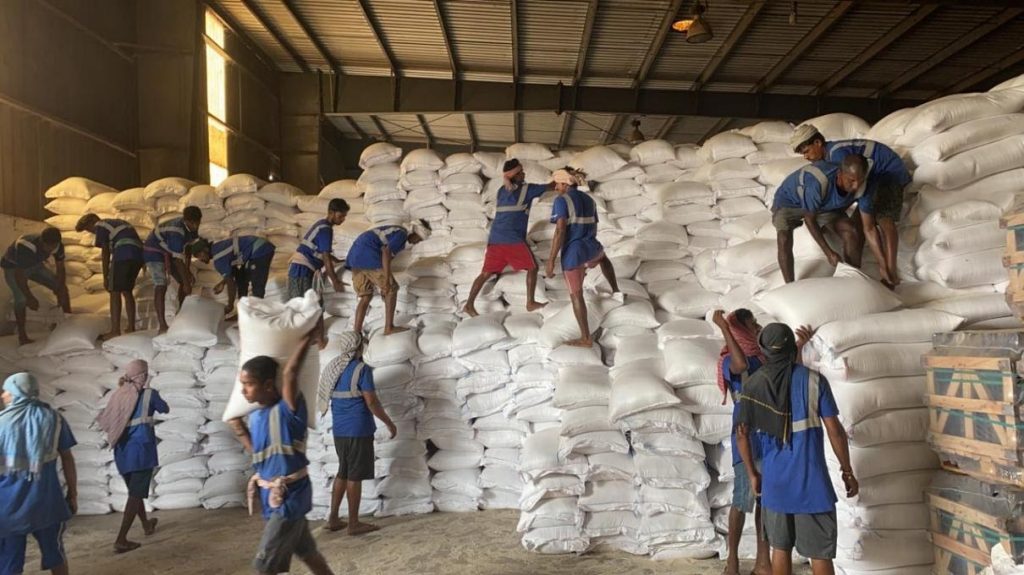Milling the highest quality of thin rice grains from India and then storing them in an infection-free environment should be the goal of any exporting company. Of course, the top companies will always invest to ensure the above, irrespective of whether the rice grains are non-basmati, basmati, parboiled, or other types. Products stored in hygienic conditions can be sent from India to different parts of the same or different countries at affordable prices.
The leading rice exporting companies in India would have many years of experience in exporting this product, coupled with a high annual growth rate near or above 100%. Such a company should have received quality appreciation from different parts of the world. This is what leads to high reliability and gives an importer a compelling reason to buy. Quality is often guaranteed through issuance of quality certificates.

Different Aspects of Quality
The quality of rice grains can be understood on the basis of the following parameters:
- Delectable Taste
- Flavour
- Refreshing Aroma
- Purity
- High Nutritional Value
- Hygienic Processing and Packing Methods
Good News for Indian Rice Exporters
As per the latest news and industrial estimates, rice production in India is expected to be close to high levels of roughly 105 million tonnes, much like in the years 2014-15. This reinforces the country?s position as the world?s biggest rice exporter, with Thailand and Vietnam behind it for the third consecutive year. At present, the political uncertainty in Thailand and India?s record production is what has kept the country at the top. However, only time will tell if the current farmer suicides and low support prices will be able to keep India ahead or not.
Is Surplus The Same as Export?
It is a not a good idea to keep having surplus rice and allowing it to rot inside granaries and warehouses. Instead, export would always lead to better utilization of the resources. India?s rice export policy has always been about exporting in case of excess and stoppage during limited supply. Policy changes and value addition are also necessary, and a good exporter can always take care of the latter. So, it can be said that surplus in case of rice must translate into export.
Discuss Payment Terms
Rice exporters from India will ask the buyers to pay a certain percentage of the amount as advance and the rest at the time of delivery. It is important to have a clear discussion before agreeing to get the food material. The following documents will usually be sent by the top Indian rice exporters:
- Copy of Original Bill of Lading (BL)
- Original Fumigation
- Original Invoice and Packing
- Original Certificate of Origin
- Insurance
- Testing and Any International Survey Form
Documents other than the ones promised would be priced extra.
Different Types of Export-Value Rice
- Basmati– The name ?Basmati? is used to signify pure and flavourful rice with long grains. This type of rice has been available in India since the 19th century. Aroma and quality are what make it popular the world over.
- Non–Basmati– Basmati rice is just 1% of the total production of rice in India, with the rest being non-Basmati. The latter is available in different sizes and shapes, with varieties being round, like beads, short and thick, and long and slender. It may have the elongation or aroma of Basmati price, but will definitely not have both. PR 14, PR11, IR 64, parboiled, brown, milled raw, steamed, and sella- golden/white are some of the non-Basmati types.
- Katarni Rice– This form of rice is normally grown in Bhadshabhog and Randhunipagal. Varieties of this rice are available for high amounts in the local market. Aromas from some types of Katarni Rice are more than the usual Basmati kinds.
- Ponni Varieties– These types of rice have been very popular in Tamil Nadu since a long time, with the State being one of the leading consumers of rice in the country. Many of these have been recognized as hybrid varieties of Ponni, including Swarna Masuri, Andhra Ponni, Karnataka Ponni, Kalsar Ponni, and Rice Ambai 16.
The cash flow generated due to the export of rice helps improve lives of Indian farmers, with many of them living in the states of Odisha, West Bengal, Punjab, Haryana, and Jharkhand. Among the different world destinations, the most common places that import rice from India are:
- UAE
- Saudi Arabia
- Iraq
- Kuwait
- Iran
- Parts of South East Asia
- African Nations
How is the Enquiry Sent?
Exports receive enquiries about rice export through forms on their websites, or through email or WhatsApp. A customized quote is sent on the basis of the enquiry. Verbal communication takes place to confirm the order. After advance payment as per agreed terms, the exporter starts working on the order. Goods are packed and sent to the shipping port with documents.

As the editor of the blog, She curate insightful content that sparks curiosity and fosters learning. With a passion for storytelling and a keen eye for detail, she strive to bring diverse perspectives and engaging narratives to readers, ensuring every piece informs, inspires, and enriches.








